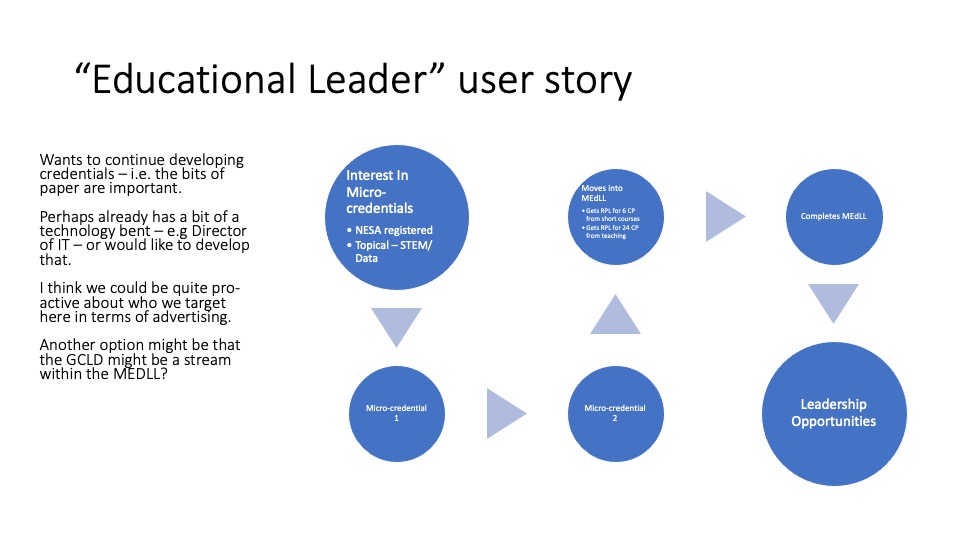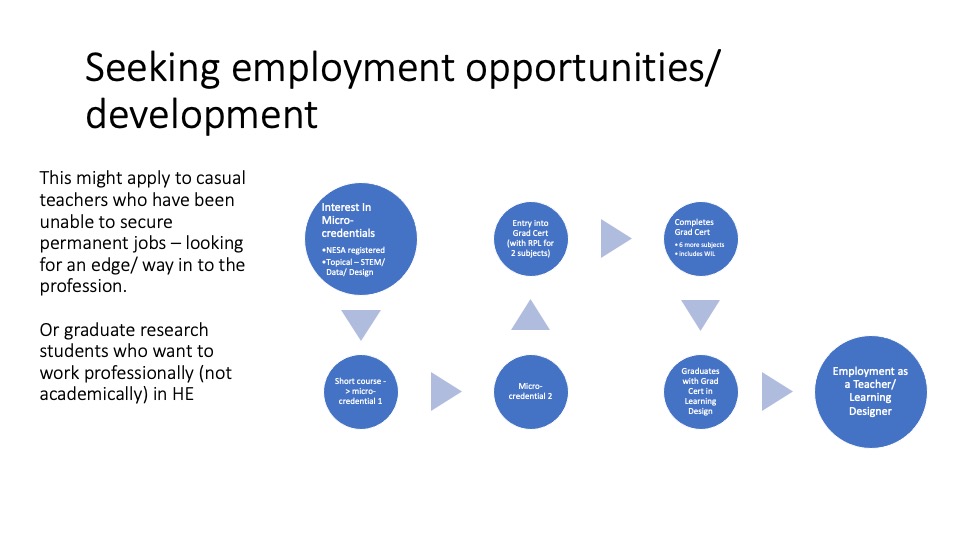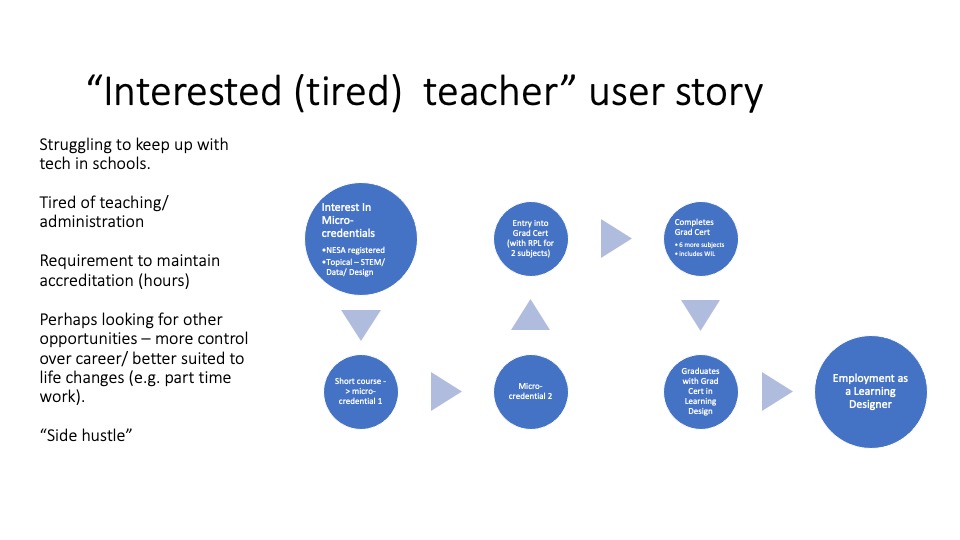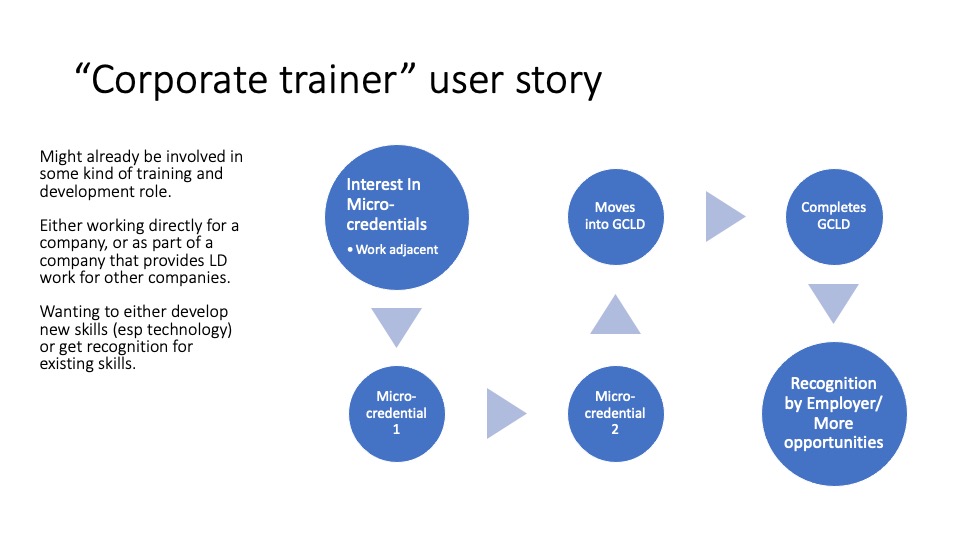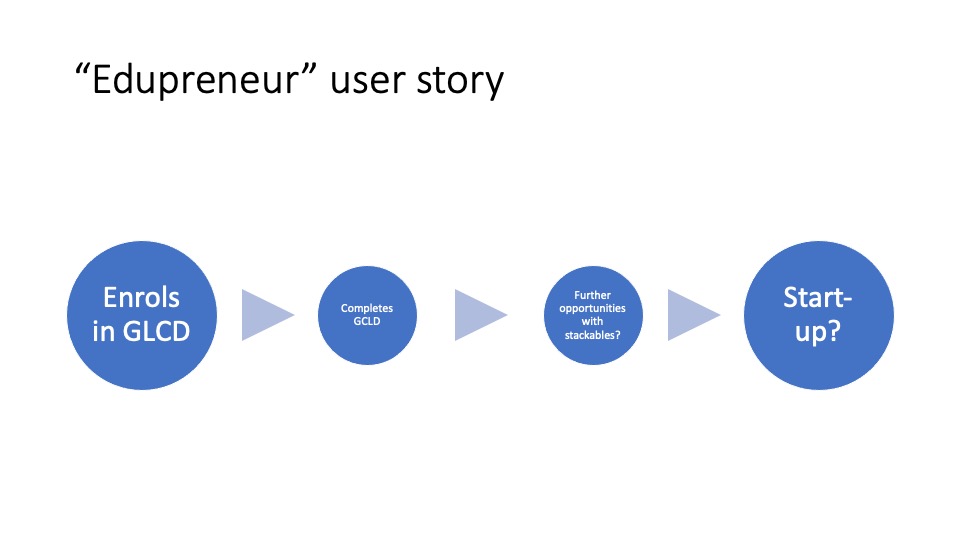Understanding of teaching, learning and/ or assessment processes
In 2020-2021, I am developing a new course: the Graduate Certificate of Learning Design at UTS, which is made up of eight subjects. I have adopted a whole of course approach to this, thinking holistically about the course, rather than each subject individually. This approach was inspired by Biggs (2014) and Biggs and Tang’s (2014) work on Constructive Alignment, which specifically refers to aligning learning and teaching activities with learning objectives and assessment tasks. I think this is especially important in professional contexts, such as learning design; I’ve been frustrated in the past with what I’ve felt were assessment tasks that lacked relevance to professional contexts, so this is something that I wanted to be mindful about in designing this course.
With this in mind, I wanted to create assessment tasks that were relevant to the work that my students, as learning designers or working in learning design adjacent roles, would be undertaking. This meant that they had to be current, authentic and close to practice. In addition, they needed to be assessed by suitably relevant figures within industry: ideally, learning designers themselves.
For this reason, I chose to adopt a portfolio approach for the assessment tasks across the whole course. In each subject, students complete a ‘learning object’ directly related to work as a learning designer. In addition, they complete a reflection where they document their learning based on that task. For example, in Predict, students undertake a future focused learning object – this might include designing something like a VR Tour, or an App wireframe, or branching scenario using H5P.
https://app.situ360.com/317fa8/3935/22445/public
The above link directs to a 3D environment that a student designed as part of their assessment task and is part of their portfolio.
An understanding of target learners
The students who enter the Graduate Certificate in Learning Design are for the most part already working. They already have a bachelor’s degree, or significant equivalent work experience. In many cases they are working in training or education, or related fields. As part of our mapping process in developing this course, we undertook stakeholder research with industry and learning designers, and used that to develop some brief personas of likely learners. These include:
- Corporate Trainer: This learner is someone currently working in Human Resources or Training and Development, and is seeking a qualification or credential to reflect that work.
- Leadership-Seeking Teacher: This is a teacher who is seeking to upskill their original degree, specifically with an emphasis on becoming an instructional leader within their school.
- Edupreneur: This is a person who might have completed a degree in event management or software development, and wants to enter the ed-tech market, and is seeking an educational qualification to assist in that process.
- Teacher seeking a career change: This is a teacher who is looking to use their teaching skills to change careers, into training and development or learning design.
- Learning Design Professional: This is person already working in Learning Design (especially in Higher Education) who might be seeking a credential to reflect that work they are doing.
- Higher Degree Research Student: This is a HDR student who is keen to do some training in teaching and learning, to better prepare themselves for the competitive job marked in higher education, once they graduate.
I’ve attached some of our planning slides below.
A common feature of all of these personas were looking for a course that had three key features. Firstly, it needed to be flexible, to fit around their other home and work commitments. Secondly, it needed to be accessible, in that they could access the course through various tools (not solely face to face classes, for example). And finally, the course needed to be designed in such a way that it had direct relevance to their own current or future practice.
References
Biggs, J. (2014). Constructive alignment in university teaching. HERDSA Review of Higher Education, 1, 5-22.
Biggs, J. & Tang, C. (2011). Teaching For Quality Learning At University. McGraw-Hill.
Carr-Chellman, A. A. (2015). Instructional design for teachers: Improving classroom practice. Routledge.
Tripp, S. D. (1992). How Should Instructional Designers Be Educated? Performance Improvement Quarterly, 7(3), 116–126. https://doi.org/10.1111/j.1937-8327.1994.tb00644.x

